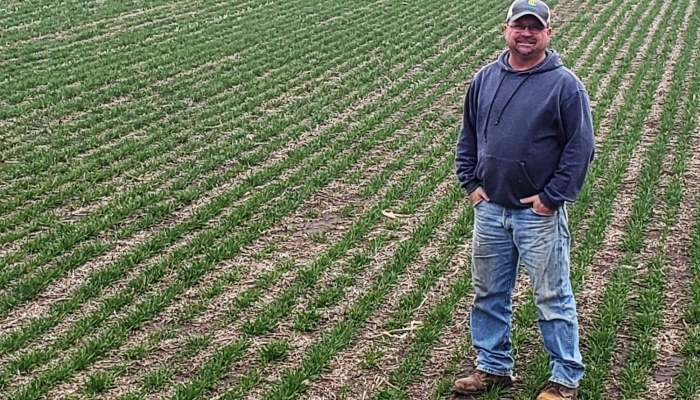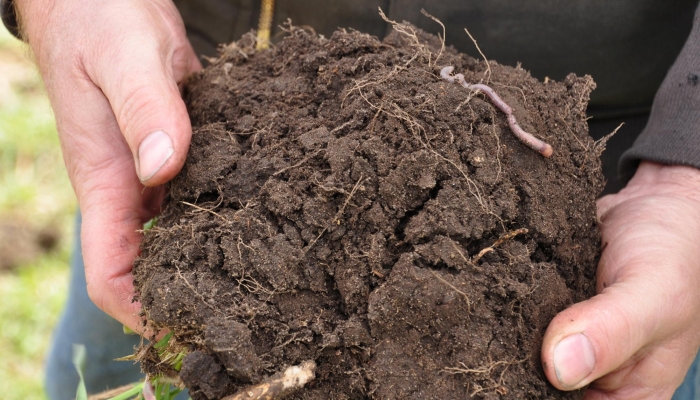Water Quality Impairments Lead to Changed Agricultural Practices
NRD raising awareness of best practices, gathering feedback for next steps
(York, NE—March 29, 2021) When it comes to water quality, the facts are clear and the water is murky: Beaver Creek and Recharge Lake have chemical loads above the standard set by the state of Nebraska for optimum health. The quantity of atrazine, nitrogen, and phosphorus contaminating these waterbodies is causing problems for aquatic life. The evidence is easy to see with the naked eye—water that is cloudy with suspended sediments that won’t settle, no matter how long you wait. These sediments are the carriers of the chemicals, which have reduced the populations of many species in the creek and lake.
No one is disputing the fact that these waterbodies are compromised and that the problem needs to be addressed at the source by keeping soils and agrichemicals on the fields and out of the water.
How to accomplish that while keeping producers profitable is another story.
Gathering input from local producers and landowners on this topic was the effort of a recent collaboration between the Upper Big Blue Natural Resources District and JEO Consulting Group. An EPA-approved Water Quality Management Plan that targets the impaired waterbodies is already in place; however, the NRD is asking those that live and farm in the watershed for direction on next steps for the plan’s implementation.
The landowners, operators, agribusiness owners, recreationists, municipal representatives, and livestock producers involved in the stakeholder process came to the discussion with a variety of knowledge and experience. Some are already doing a lot to reduce erosion and runoff on their farms. Others said that there are significant barriers to adoption of practices that would improve water quality.
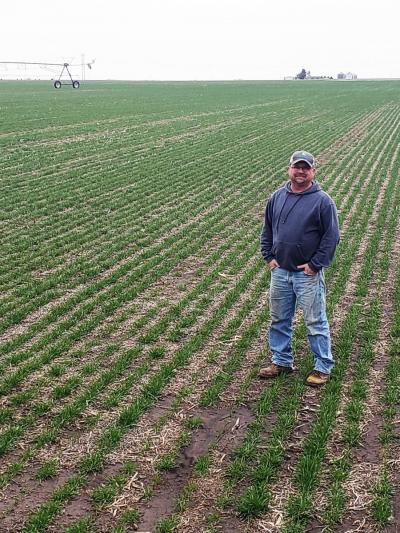 Jess Spotanski was one of the farmers involved in the discussion. His family has been farming in York County since the 1980s. In the 15 years since he took over the operation, he has tried a number of practices to reduce erosion. “I think that there are so many options and solutions to the problems that it’s mind boggling. Even though [this watershed] is such a small area…it encompasses so many growers and landowners. I think the task of finding solutions that work for everyone is daunting for sure.”
Jess Spotanski was one of the farmers involved in the discussion. His family has been farming in York County since the 1980s. In the 15 years since he took over the operation, he has tried a number of practices to reduce erosion. “I think that there are so many options and solutions to the problems that it’s mind boggling. Even though [this watershed] is such a small area…it encompasses so many growers and landowners. I think the task of finding solutions that work for everyone is daunting for sure.”
Spotanski and a group of other producers say they are ready to tackle that challenge.
And the Upper Big Blue NRD is ready to partner with them to do it.
Stakeholders and Solutions
Over the course of three months, the group of 14 stakeholders from across the watershed (touching Hamilton, York, and Seward Counties) met virtually to discuss best agricultural land management practices for improving water quality. A few practices rose to the top as those that stakeholders believe more producers would utilize if the NRD and other agencies could increase cost-share and provide additional technical resources.
The top practices suggested were cover crops, buffer strips, no-till, and irrigation water management.
(see infographic)
The group discussions culminated in a public open house in March. The purpose of the event was to provide information about water quality issues and proposed solutions, and to gather feedback from the public. (Those that were not able to attend the open house in person are invited to view materials and videos from the event, as well as provide feedback, at www.upperbigblue.org/wqmp. Responses will be collected until April 9.)
This feedback will guide additional federal grant proposals, said Marie Krausnick, Upper Big Blue NRD water department manager. Ideally, the NRD will receive federal funds that will combine with NRD and state funds to provide greater cost-share dollars to help producers implement best management practices.
Hearing from the public is essential to the improvement of these waterbodies as well as the general work of the organization, says NRD board member Ronda Rich. “It’s so helpful to us to have people who actually come in and tell us what they want,” she said.
When it comes to constituent feedback, Rich says those who live in town tend to be more concerned with water quality (is the water good to drink?) while those who live in the country are more focused on water quantity (will there be enough that I can raise a decent crop?). “We have two different entities, but [the NRD] has to represent both,” she said.
Spotanski and fellow stakeholder group member Tony Kreifels agree that the stakeholder process was beneficial, but say it was just the beginning. Both would like to see more education and outreach from the NRD on these topics, as well as opportunities to network and share ideas with other local producers. “Sometimes farmers are fearful of doing something different. We kind of just do what we’ve always done, and it might not be the best thing. Giving information and making producers aware of the programs that are out there would be huge,” said Kreifels, a fourth-generation York farmer. “Sometimes we don’t realize the potential of these tools and practices and how we can best benefit from them.”
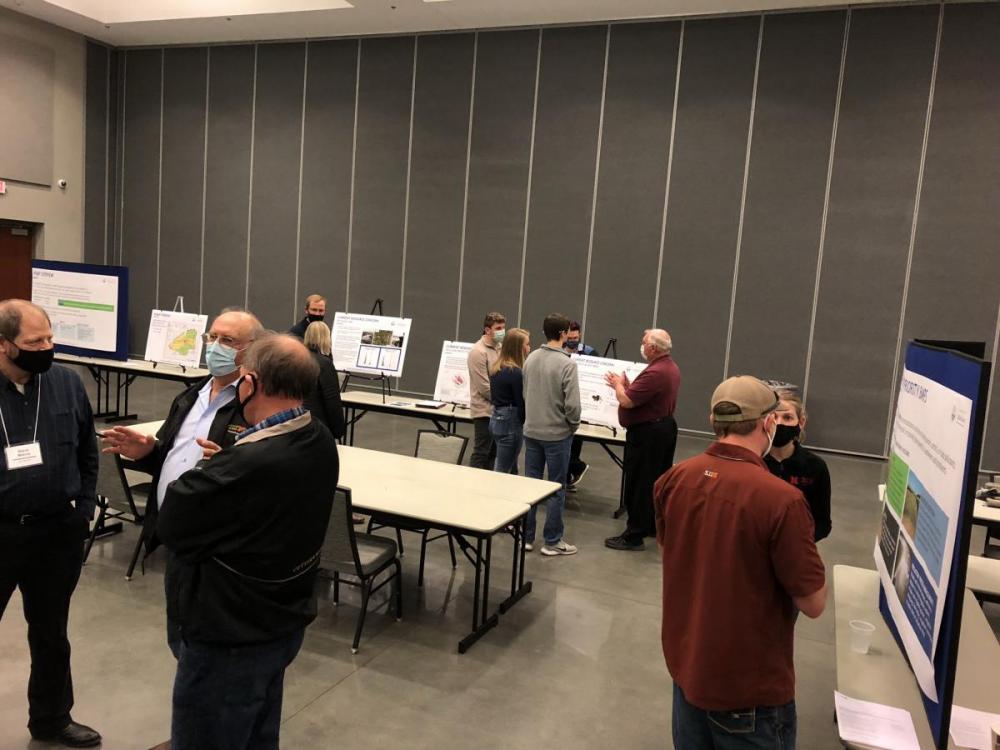
Aquatic Life At Risk
The most troubling image at the public open house was of a frog that had been exposed to atrazine during development. The result was an extra set of malformed legs jutting out of its backside. This kind of genetic mutation is not uncommon, said Elbert Traylor, who works on nonpoint source contamination for Nebraska Department of Environment and Energy. Traylor was a technical resource to stakeholders and the public on the impacts of poor water quality on aquatic life.
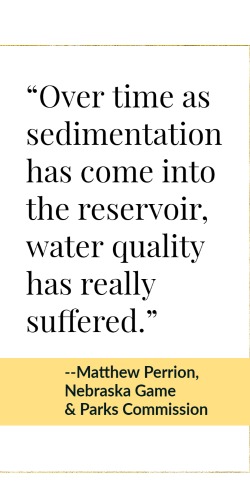 “Our agency is responsible for monitoring streams and lakes across the state,” said Traylor. “We set standards to make sure that the water quality meets the needs of aquatic life and human consumption, recreation, livestock watering and that sort of thing. In the Beaver Creek watershed, the atrazine levels exceed the standard for aquatic life, suppressing the population of aquatic species.”
“Our agency is responsible for monitoring streams and lakes across the state,” said Traylor. “We set standards to make sure that the water quality meets the needs of aquatic life and human consumption, recreation, livestock watering and that sort of thing. In the Beaver Creek watershed, the atrazine levels exceed the standard for aquatic life, suppressing the population of aquatic species.”Atrazine is an herbicide used before and after planting and is not a chemical that is naturally found in waterbodies. Beyond the mutations it can cause, atrazine also reduces the amount of vegetation aquatic species rely upon for food and habitat.
The chemical has also been linked to certain kinds of reproductive cancers in humans.
“Atrazine runs off the fields and into the streams…what we’re trying to do in this watershed is work with producers on a plan that will bring practices that will reduce the runoff of atrazine…in a way that works with their operation,” said Traylor. “We’ll provide cost-share programs and technical assistance to get them over the hump to change practices that they’re doing on their farm that are effective for controlling atrazine but also effective for the producer in terms of time and resources.”
A stone’s throw away from Beaver Creek sits Recharge Lake at the NRD managed Bruce L. Anderson Recreation Area in York County. Visited by thousands of people each year, it was once one of the prime fishing spots in the area.
“Historically, the lake provided some excellent largemouth bass fishing, channel catfish, as well as bluegill and crappie. Over time as sedimentation has come into the reservoir, water quality has really suffered,” explained Matthew Perrion, a fisheries biologist with Nebraska Game and Parks Commission.
There’s a lot more “turbidity” in Recharge today than there was in 1990 when the lake was constructed, said Perrion. Turbidity is a measure of the degree to which water loses its transparency due to the presence of suspended particulates. The more total suspended solids in the water, the murkier it is and the higher the turbidity measurement. Erosion of the soil surrounding the lake is one major cause of the increase in turbidity. “[Recharge Lake] is becoming shallower as well as that sedimentation flows into the reservoir. With that shallower water, the lake becomes warmer, and that can stress the fish,” he said.
While you can still find catfish and common carp at Recharge, due to the poor water quality there are few other species thriving in the lake. The carp are a non-native, highly destructive species and were likely introduced by a resource user, said Perrion, who notes this species' foraging technique also stirs up the sedimentation in the lake, causing cloudier water. Decreasing turbidity would have a significant impact on fish population recovery as it would allow more fish species to forage and hunt effectively. Water clarity means more light penetration, which increases the photosynthesis of aquatic plant life, thereby increasing the oxygenation levels in the lake that allows fish to breathe.
“A lot of things can suffer when you have high turbidity. When you don’t have that aquatic plant life, you don’t have habitat for the fish that they need for spawning…As the water quality suffers, other things cascade from there,” he said.
Once practices are put into place to prevent further buildup of sediments, Perrion suggests that the lake be dredged to restore deeper, cooler pockets essential for fish habitats. This will require a significant investment of funds, but there is work to be done at the field level first.
Many Problems, Many Possible Solutions
The stakeholders group identified four key practices they would like to see implemented more widely in the Beaver Creek and Recharge Lake watershed area: cover crops, buffer strips, no-till, and irrigation water management. Nathan Pflueger, a precision agriculture coordinator for Pheasants Forever, was on hand to explain these practices at the open house.
“Cover crops are good at preventing erosion because you have biomass on the landscape when your cash crops aren’t out there, so there’s always a growing root in the ground sucking up excess nutrients and holding the soil in place,” said Pflueger. Cover crops are beneficial during heavy rain events as well, as they retain moisture, prevent flooding, and keep soil and inputs in the field.
As extreme weather becomes more the norm in the Midwest, practices that reduce the effects of flooding and drought are essential.
“With the extra biomass that you gain from cover crops, it can also be used for haying and grazing resources, as well,” providing producers with an extra revenue stream, Pflueger explained.
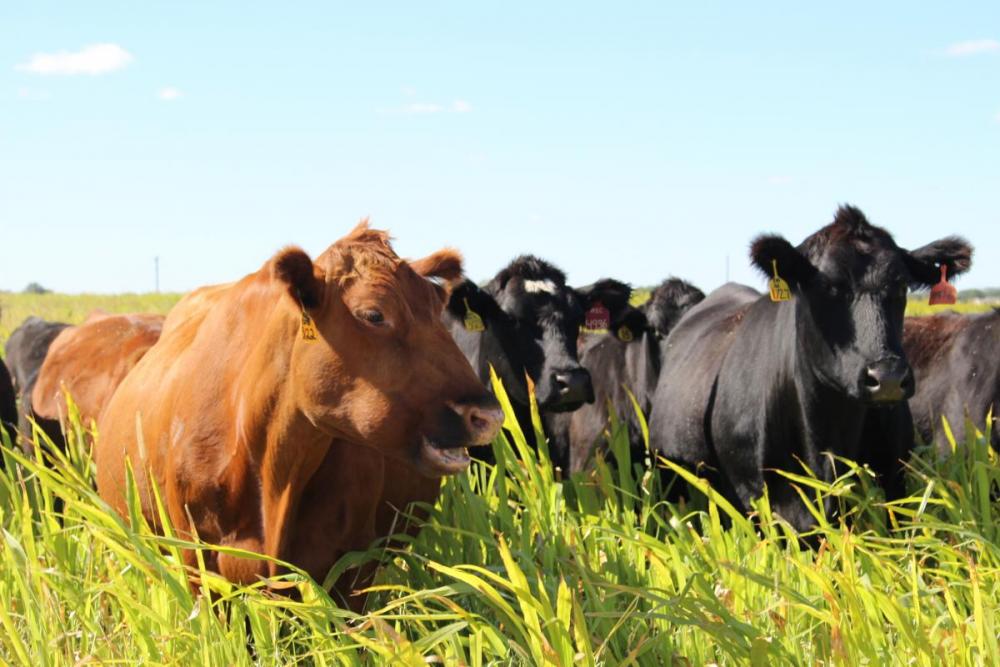
“Buffer and filter strips are perennial strips of vegetation that help filter out silt and clays, pesticides and fungicides and herbicides, and keep them from getting into the ground water. They can also be used as wildlife habitat and pollinator resources,” said Pflueger. These strips are planted between crops and waterways to will trap sediments and chemicals that would otherwise be washed out of the field.
“No-till [practices] can reduce soil erosion, increase soil health, and increase soil organic matter,” said Pflueger. Changing to this practice from conventional tillage also reduces costs by removing equipment, fuel, and labor needed for tilling. “The less you’re out there working the soil, the faster you’re going to build organic matter, which in turn increases water holding capacity and helps you get through more extreme weather events,” said Pflueger. Keeping the soil structure intact prevents erosion that impacts water quality.
Irrigation water management sounds like it would be an issue of water quantity more than quality, but the two are related, explained Pflueger. “When you add excess water to the soil, you’re catching up those nutrients and then you’re moving them throughout the soil profile, or they might be bound to the soil particles so that when you add that excess water it’s running them off the field. Irrigation water management is a tool that can be used to make a farm operation more profitable,” as well as reduce impacts on water quality in the watershed.
Irrigation management includes soil moisture sensors, efficiency upgrades to current irrigation systems, variable rate irrigation systems, irrigation scheduling, flow meters, and irrigation conversions to center pivot or subsurface drip systems.
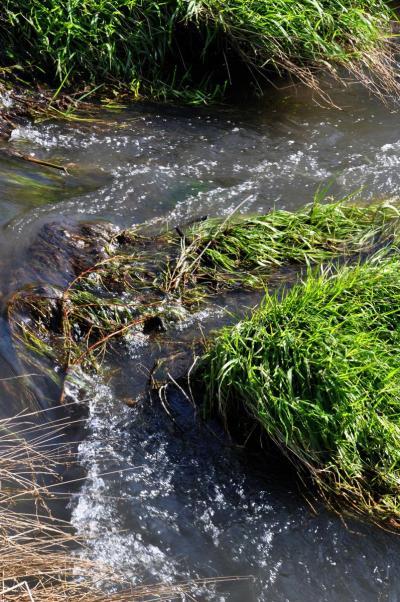 Barriers: Cost, Culture, and Communication
Barriers: Cost, Culture, and CommunicationThere are a variety of reasons these practices are not already widespread, from cost to culture to the status quo, explain Spotanski and Kreifels, both of whom have implemented several of the practices on their farms.
“There are different kinds of producers out there. Some are willing to change and try new things and some just want to do what their dad or their grandpa did without even thinking maybe there is a better way,” said Kreifels.
Spotanski says he doesn’t believe producers are doing anything intentionally harmful to the land, but sometimes doing the same thing that’s been done for years isn’t the best thing to keep doing. “We all like short-term results, but these practices are all for the long-term….You can see the dollars going into implementing these things, and the headaches they’re going to cause…but to get to the profitability, that’s the hardest part to explain or understand.”
Spotanski says when it comes to convincing producers to change their practices, profitability is key. If producers believe there’s a chance that they will lose money on a practice, they aren’t going to try it, no matter how much others tout its environmental impact. “Some of these practices aren’t necessarily going to increase your profitability in the short-term. How do you convince somebody to change their practices, when it’s going to affect their bottom line?” he said.
Other stakeholders also suggested a barrier to adoption of these practices was communication: farmers are more interested in hearing from other farmers about what works, not from the NRD or other agencies.
“One of the things that came up in the stakeholder meetings repeatedly…is the importance of crop consultants, farm managers, people at the cooperatives, the vendors, the people involved with the fertilizer industry. They have a continuing interaction with farm operators and the farming community…That is a very good avenue for promotion of things like cover crops and filter strips,” suggested Doyle Onnen, a farm manager with Farmer’s National.
Onnen and Spotanski both spoke about the dangers of short-term thinking when it comes to farming. All farm practices need to be oriented toward greater stewardship, they said.
“Going forward, I have this hope and I know there are a lot of other people too, that we do sustain and actually improve our production practices and improve our farms,” said Onnen, who has more than 30 years’ experience in agriculture. “We really are in the job of preservation. We are trying to preserve our environment for future generations, for the farmers that are going to come.” Onnen sees the future of agriculture as inextricably linked to soil health. “Maintaining our soil and sustaining it and having that productivity for future generations…it’s encouraging that we’re seeing more of that.”
Spotanski agrees. A farmer’s ultimate goal shouldn't only be about profit or yield, he says. “It should be about stewardship of the land. It’s a finite resource. Everyone probably feels like they’re doing some kind of stewardship, but what’s the next level of stewardship that you can do? My advice is to try something. Start small. Learn from it. If you get some positive results, maybe expand on it. Maybe start with some of the worst-case-scenario fields that need more attention. Grow from there.”
To see additional resources and give your feedback, visit www.upperbigblue.org/wqmp.
Cover crops grow between corn rows
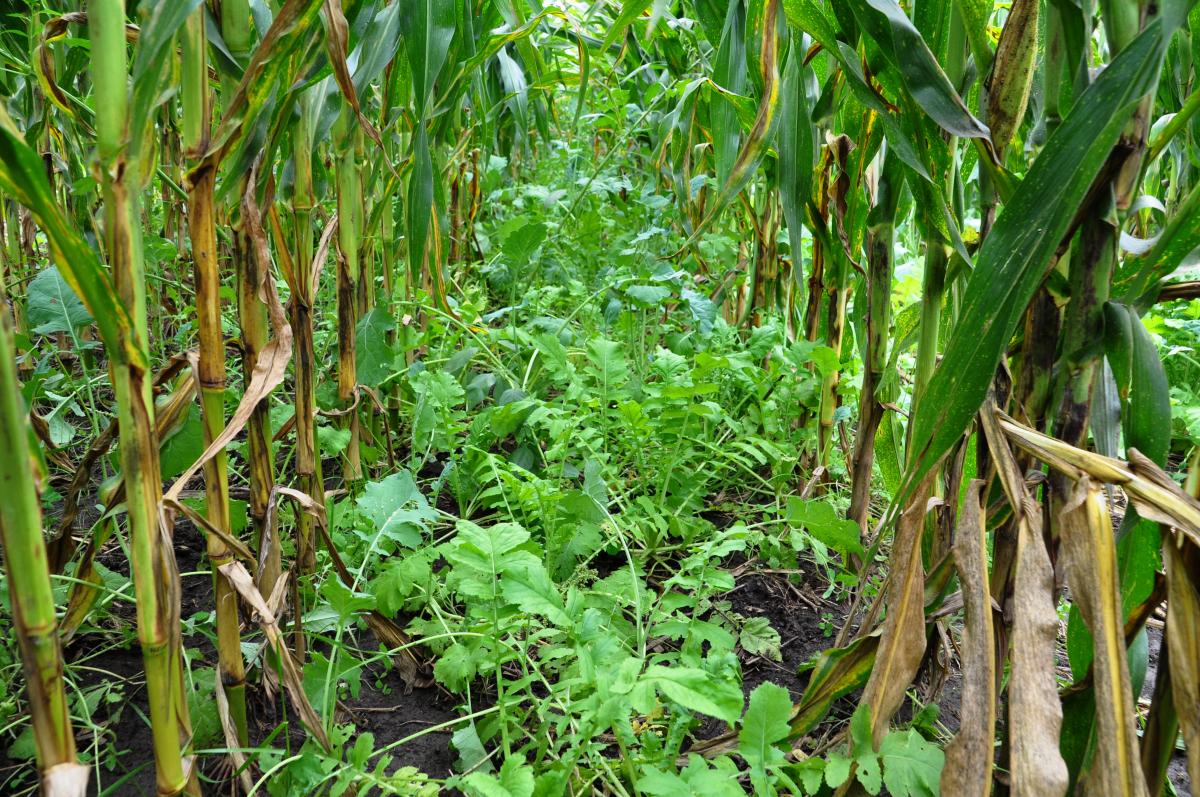
(Some photos for this article are provided courtesy of the Conservation Media Library, Soil and Water Conservation Society)

